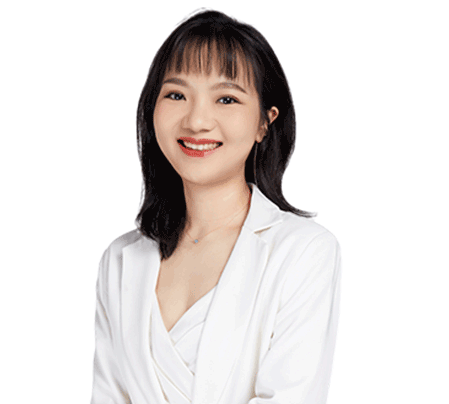这七道难题是CFA考试中最棘手的问题,有没有什么方法可以让考试者们更容易的理解并解答你?高顿财经通过一些专业人士的专业解读,为你整理出了他们的解答方式,正在准备CFA考试的朋友们,来看看吧!好文记得分享~
By now you should have done the majority of the 300 hours of study recommended to pass each of the three CFA level exams. If not, don’t panic – there are still possible short cuts. If so, do you really know all you need to know? Do you know the methodology for some of the most complex theories that are likely to crop up in the exam?
Fear not, we’ve spoken to training companies who prepare students for the CFA to provide us with some of the toughest practice questions they coach on in order to ensure that students do not slip up in the exam – as well as tips for getting to grips with them more easily. Do you agree? If not, post your questions below.
1. Level I: Jane Acompora is calculating equivalent annualized yields based on the 1.3% holding period yield of a 90-day loan. The correct ordering of the annual money market yield (MMY), effective yield (EAY), and bond equivalent yield (BEY) is:
A. MMY < EAY < BEY.
B. MMY < BEY < EAY.
C. BEY < EAY < MMY.
Tim Smaby, VP, Advance Designations, Kaplan Professional:
“The key is that this question can be answered without doing any numerical calculations if you understand the differences in how the yields are calculated.
No calculations are really necessary here because the MMY involves no compounding and a 360-day year, the BEY requires compounding the quarterly HPR to a semiannual rate and doubling that rate, and the EAY requires compounding for the entire year based on a 365-day year.
A numerical example of these calculations based on a 90-day holding period yield of 1.3% is: the money market yield is 1.3% × 360 / 90 = 5.20%, the bond equivalent yield is 2 × [1.013182.5 / 90 – 1] = 0.0531 = 5.31%, which is two times the effective semiannual rate of return, and the effective annual yield is 1.013 365 / 90 – 1 = 0.0538 = 5.38%. Calculating the semiannual effective yield using 180 days instead of 182.5 does not change the order.”
2. Level I: A semi-annual pay floating-rate note pays a coupon of Libor + 60bps, with exactly three years to maturity. If the required margin is 40 bps and Libor is quoted today at 1.20% then the value of the bond is closest to:
A. 99.42
B. 100.58
C. 102.33
Nicholas Blain, chief executive, Quartic Training:
“Floating rate bonds are pretty difficult to value accurately, as they are an essential component to swaps. However, there is an approximation provided in the CFA curriculum, and a rather neat Quartic short-cut too.
A floating-rate note can be (roughly) valued on a coupon date by discounting current Libor + quoted margin (think of this as the regular coupon) at current Libor + required margin (think of this as the discount rate). In other words, we discount what we get (PMT) at the rate that we need (I/Y).
On the calculator: N = 6, I/Y = (1.2 + 0.4) ÷ 2 = 0.8, PMT = (1.2 + 0.6) ÷ 2 = 0.9, FV = 100 è PV = 100.58.
There are short-cuts you can use. Firstly, note that if a bond is paying exactly what is required (i.e. quoted margin = required margin) then the bond will trade at par on each coupon date. In this question, the bond is paying 20 bps per year more than required. This means that we should pay a 20 bp premium per year. Three year maturity means a 60 bp premium. Hence our quick “guess” is that the bond should trade at 100 plus a 60 bp premium, or 100.60. Answer B is the only possible answer.
3. Level I: The following details (all annual equivalent) are collected from Treasury securities:
Years to maturity Spot rate
2.0 1.0%
4.0 1.5%
6.0 2.0%
8.0 2.5%
Which of the following rates is closest to the two-year forward rate six years from now (i.e. the “6y2y” rate)?
A. 2.0%
B. 3.0%
C. 4.0%
Nicholas Blain, chief executive, Quartic Training:
“Calculating forward rates from spot rates and spots from forwards can be done easily, and quite accurately, with the banana method, which we’ll come to below.
Note that the six-year spot rate (say, z6) is 2% and the eight-year spot rate (z8) is 2.5%. Let’s call the 6y2y rate F, to keep notation easy.
To solve this, draw a horizontal timeline from 0 to 8, marking time 6 on the top. To avoid arbitrage, investing for six years at z6 then two years at F must be the same as investing for eight years at the z8rate. Mark above your timeline “z6 = 2%” (between T = 0 and T = 6) and “F = ?” (between T = 6 and T = 8), and below the timeline “z8 = 2.5%”.
Algebraically we can say that: (1 + z6)6 x (1 + F)2 = (1 + z8)8.
With a bit of effort, this solves as: F = [(1 + z8)8 ÷ (1 + z6)6]0.5 – 1 = [1.0258 ÷ 1.026]0.5 – 1 = 4.01%.
Here’s our banana method, though. Just below the timeline you have drawn, write down how many bananas (or any other inanimate object) you have received if you get 2.5 per year for eight years. Answer: 20. Now write down, above the timeline, how many you get in the first six years, at 2 per year. Answer: 12. Now calculate how many bananas you must have got in the last two years. Answer: 20 – 12 = 8. This is over two years, hence 4 per year, answer C. Banana method gives 4.00%; accurate method gives 4.01%. Close enough!”
4. Level II: Using the information in Exhibit 1, which of the following is closest to the value of a European call option with a strike price of $100?
Exhibit 1: Input for Black Scholes (European) Options
Stock Price (S) 100
Strike Price (X) 100
Interest Rate (r) 0.07
Dividend Yield (q) 0.00
Time to Maturity (years) (t) 1.00
Volatility (Std. Dev.)(Sigma) 0.20
Black-Scholes Put Option Value $4.7809
Exhibit 2: European Option Sensitivities
Sensitivity Call Put
Delta 0.6736 -0.3264
Gamma 0.0180 0.0180
Theta -3.9797 2.5470
Vega 36.0527 36.0527
Rho 55.8230 -37.4164
A. $4.78
B. $5.55
C. $11.54
Tim Smaby, VP, Advance Designations, Kaplan Professional:
“This is a three-minute question that can take you less than one minute if you get through the initial shock of not having memorized the Black-Scholes Model. On the other hand, if you had memorized the Black-Scholes model, it would take you 20 minutes to reverse engineer the data to get to the value of the call option. The trick is that you are given all the information for put-call parity. This result can be obtained using put-call parity in the following way:
Call Value = Put Value ? Xe?rt + S = $4.78 ? $100.00e(?0.07 × 1.0) + 100 = $11.54
The incorrect value of $4.78 does not discount the strike price in the put-call parity formula.”
5. Level II: (Excerpt from item set)
Financial information on a company has just been published including the following:
Net income $240 million
Cost of equity 12%
Dividend payout rate (paid at year end) 60%
Common stock shares in issue 20 million
Dividends and free cash flows will increase a growth rate that steadily drops from 14% to 5% over the next four years, then will increase at 5% thereafter.
The intrinsic value per share using dividend-based valuation techniques is closest to:
A. $121
B. $127
C. $145
Nicholas Blain, chief executive, Quartic Training:
“The H-model is frequently required in Level II item sets on dividend or free cash flow valuation.
The model itself can be written as V0 = D0 ÷ (r – gL) x [(1 + gL) + (H x (gS – gL))] where gS and gL are the short-term and long-term growth rates respectively, and H is the “half life” of the drop in growth.
For this question, the calculation is: dividend D0 = $240m x 0.6 ÷ 20m = $7.20 per share.
V0 = $7.20 ÷ (0.12 – 0.05) x [1.05 + 2 x (0.14 – 0.05)] = $126.51, answer B.
However, there is a neat shortcut for remembering the formula. Sketch a graph of the growth rate against time: a line decreasing from short-term gS down to long-term gL over 2H years, then horizontal at level gL. Consider the area under the graph in two parts: the ‘constant growth’ part, and the triangle.
If you look at the formula, the ‘constant growth’ component uses the first part of the square bracket, i.e. D0÷ (r – gL) x [(1 + gL) …], which is your familiar D1 ÷ (r – gL). For the triangle, what is its area? Half base x height = 0.5 x 2H x (gS – gL) = H x (gS – gL). This is the second part of the square bracket.
Hence the H-model can be rewritten as V0 = D0 ÷ (r – gL) x [(1 + gL) + triangle].”
6. Level III: Terry Bowers, an analyst at MDU Investments, observes that China bonds offer a comparable interest rate to U.S. bonds. In contrast, short-term U.S. interest rates are currently 3% higher than short-term China rates.
The forward currency market is active and efficiently priced, and Bowers expects that the current China bond spread over comparable Treasuries will remain the same should the Federal Reserve increase interest rates 75 basis points as forecasted. An analytical firm has furnished a country beta of 0.36 for China with the United States, and a particular China bond issue that Bowers is interested in has a duration of 3.8.
Assume Bowers is correct that U.S. interest rates will increase 75 basis points and the nominal spread between U.S. and China bonds will not change. Further assume Bowers believes the U.S. dollar will depreciate 2% over the year against the Chinese (CNY) currency, Bowers’s optimal strategy to maximize total return is to buy the:
A. U.S. bond.
B. China bond and buy the USD forward.
C. China bond and then sell the CNY in one year.
Tim Smaby, VP, Advance Designations, Kaplan Professional:
“Investing in the foreign market (China bonds) exposes Bowers to two sources of return: the RFC of the bonds and the change in the CNY, the RFX. Bowers is assuming the nominal spread in the bonds will not change (i.e., the yield of both bonds will increase 75 basis points). (He is assuming a yield beta of 1.00). The assumption in this type of analysis is the two bonds have equivalent duration.
Thus, both will decline equally in price and will have equal RFC. The RFX of the U.S. bond is zero; there is no currency exposure. For the China bond, the expected decline in the USD of 2% is equivalent to an approximate 2% appreciation of the CNY. This means purchase of the China bond will be superior to the U.S. bond for Bowers.
However, he must also consider any premium or discount currency hedging will earn to determine if an unhedged or hedged currency exposure is optimal. The forward premium or discount depends on the differential in short-term interest rates. The U.S. short-term rate is 3% higher, which means the CNY will sell at a forward premium of 3%. Bowers should buy the USD forward (sell CNY forward) buying future dollars at the 3% discount.”
7. Level III: (Excerpt from item set)
The P&S 400 Index has a current value of 1200. It has a continuous dividend yield of 2% and the risk-free rate is 5% on a continuous basis. The price of a nine-month forward on the P&S 400 Index is closest to:
A. 1173
B. 1227
C. 1237
Nicholas Blain, chief executive, Quartic Training:
“The basic rule for pricing forward contracts is:
Forward price FP = spot plus cost of carry minus benefit of carry.
The cost of carry includes interest: hence for most contracts the spot is multiplied by (1 + RF)T or eRcT. Other contracts (e.g. commodities) may include storage and insurance. Benefits of carry include dividends (discrete or continuous), coupons, convenience yield (for commodities), or the foreign interest rate (for currency forwards).
In the case of an equity index forward, you may be able to do the entire calculation in your head.
In this question the spot price is 1200. The cost of carry is 5% and the benefit of carry is 2%. Never mind the continuous nature of these rates, for the moment. We can say that the net cost is 3% per year, or 2.25% for nine months. 2.25% of 1200 is 27, hence our estimate of the forward price is 1227, answer B.
If we do this accurately, we get:
FP = S0 x e(Rc – dc)T = 1200 x e(0.05 – 0.02) x 0.75 = 1200 x e0.0225 = 1227.31. Good guess!”
扫一扫微信,*9时间获取2014年CFA考试报名时间和考试时间提醒
版权声明:本条内容自发布之日起,有效期为一个月。凡本网站注明“来源高顿教育”或“来源高顿网校”或“来源高顿”的所有作品,均为本网站合法拥有版权的作品,未经本网站授权,任何媒体、网站、个人不得转载、链接、转帖或以其他方式使用。
经本网站合法授权的,应在授权范围内使用,且使用时必须注明“来源高顿教育”或“来源高顿网校”或“来源高顿”,并不得对作品中出现的“高顿”字样进行删减、替换等。违反上述声明者,本网站将依法追究其法律责任。
本网站的部分资料转载自互联网,均尽力标明作者和出处。本网站转载的目的在于传递更多信息,并不意味着赞同其观点或证实其描述,本网站不对其真实性负责。
如您认为本网站刊载作品涉及版权等问题,请与本网站联系(邮箱fawu@gaodun.com,电话:021-31587497),本网站核实确认后会尽快予以处理。

 更多服务
更多服务












